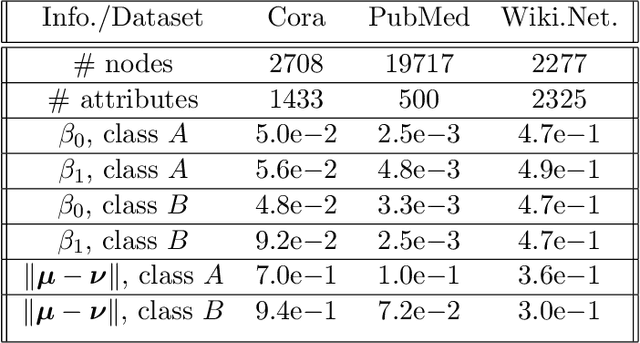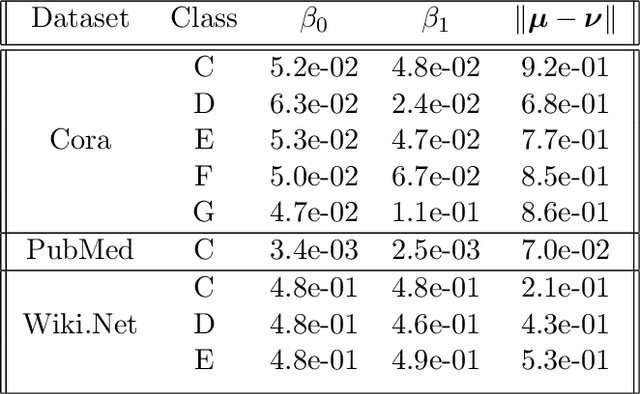Graph Convolution for Semi-Supervised Classification: Improved Linear Separability and Out-of-Distribution Generalization
Paper and Code
Feb 22, 2021



Recently there has been increased interest in semi-supervised classification in the presence of graphical information. A new class of learning models has emerged that relies, at its most basic level, on classifying the data after first applying a graph convolution. To understand the merits of this approach, we study the classification of a mixture of Gaussians, where the data corresponds to the node attributes of a stochastic block model. We show that graph convolution extends the regime in which the data is linearly separable by a factor of roughly $1/\sqrt{D}$, where $D$ is the expected degree of a node, as compared to the mixture model data on its own. Furthermore, we find that the linear classifier obtained by minimizing the cross-entropy loss after the graph convolution generalizes to out-of-distribution data where the unseen data can have different intra- and inter-class edge probabilities from the training data.
 Add to Chrome
Add to Chrome Add to Firefox
Add to Firefox Add to Edge
Add to Edge